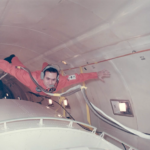Space Awareness
The Space Report Chronicles Upcoming Missions
Written by: developer
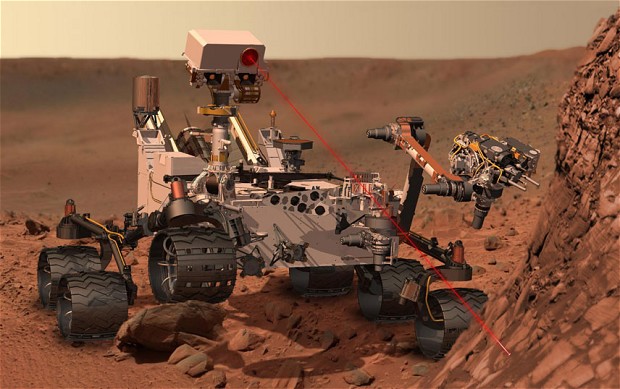 As NASA’s Curiosity rover explores the surface of Mars, scientists and engineers are hard at work on future planetary science missions. These missions provide insight into how planets and other celestial bodies are formed, the processes that shape their internal structure, land forms and atmospheres.
As NASA’s Curiosity rover explores the surface of Mars, scientists and engineers are hard at work on future planetary science missions. These missions provide insight into how planets and other celestial bodies are formed, the processes that shape their internal structure, land forms and atmospheres.
Upcoming Missions
The next mission to Mars, the Mars Atmospheric and Volatile EvolutioN (MAVEN) orbiter, is scheduled for launch in late 2013. MAVEN will measure the current rate of Martian atmospheric escape into space to help determine how the loss of Mars’ atmosphere over time has affected its climate. Understanding how much of the Martian atmosphere was lost to space can provide insight into the geologic and geochemical conditions over time, which will help us understand if Mars ever had an environment capable of supporting life.
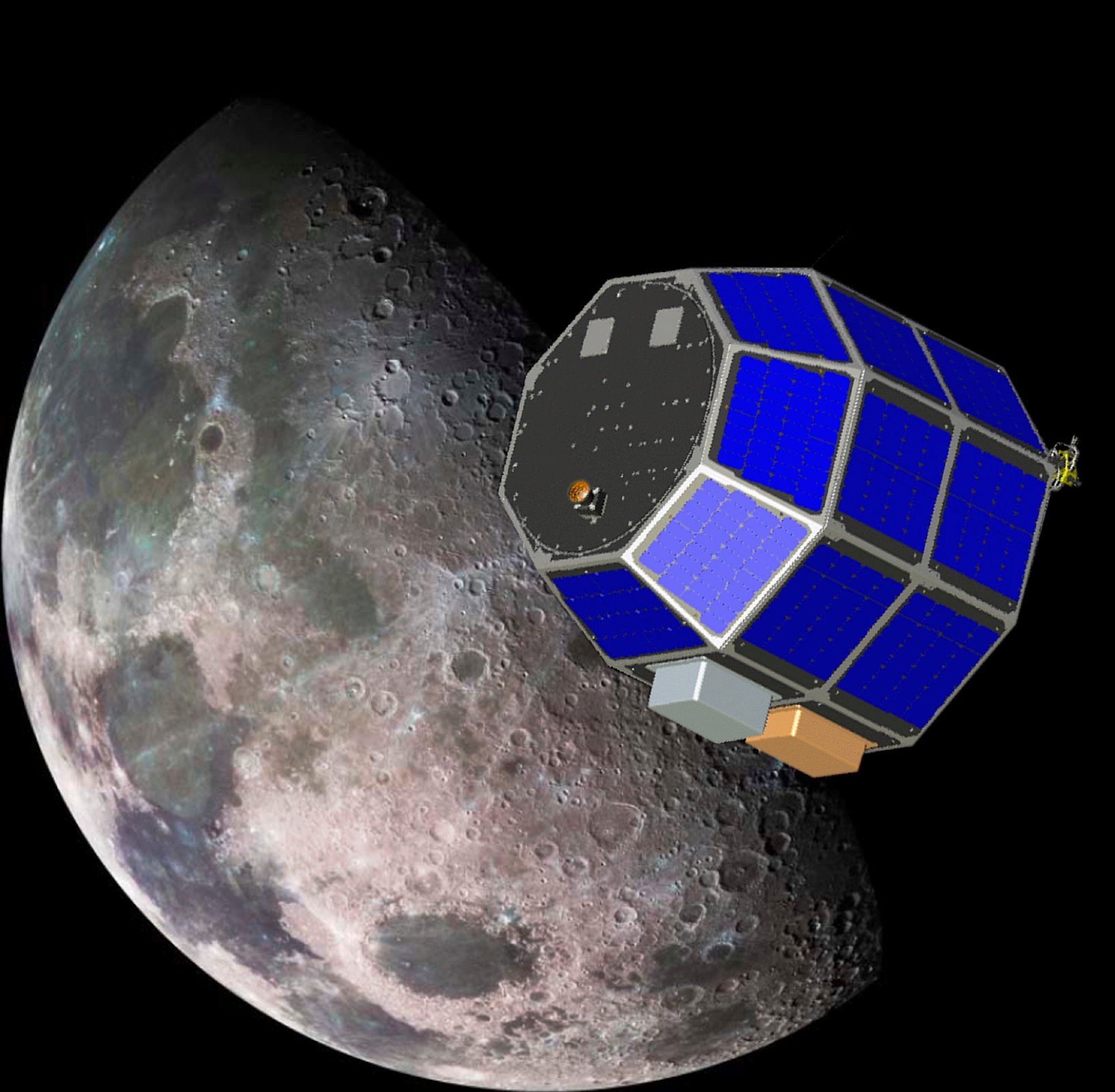 NASA’s Lunar Atmosphere and Dust Environment Explorer (LADEE), planned for launch in 2013, will fly to the Moon and spend 100 days analyzing the tenuous lunar atmosphere and dust environment. LADEE (pictured, left) will increase our knowledge of the lunar atmosphere as it exists prior to an expected increase of human activity on the Moon in coming decades. An understanding of the amount of dust in the lunar atmosphere will also affect how we would conduct lunar-based astronomy and how future human missions could deal with this aspect of the lunar system.
NASA’s Lunar Atmosphere and Dust Environment Explorer (LADEE), planned for launch in 2013, will fly to the Moon and spend 100 days analyzing the tenuous lunar atmosphere and dust environment. LADEE (pictured, left) will increase our knowledge of the lunar atmosphere as it exists prior to an expected increase of human activity on the Moon in coming decades. An understanding of the amount of dust in the lunar atmosphere will also affect how we would conduct lunar-based astronomy and how future human missions could deal with this aspect of the lunar system.
Following Japan’s successful Hayabusa asteroid sample return mission, the nation is developing a follow-up mission called Hayabusa 2. The Hayabusa 2 mission, proposed to launch in 2014, would target a C-type asteroid, an older, more basic body than the S-type asteroid visited by the first mission. The exploration of primitive bodies such as a C-type asteroid will provide researchers with clues about how the Solar System was formed and has grown, and how the primary organic materials of life on Earth were composed and evolved. According to mission planners, this knowledge is also important for understanding the formation and evolution of planets being discovered around other stars.
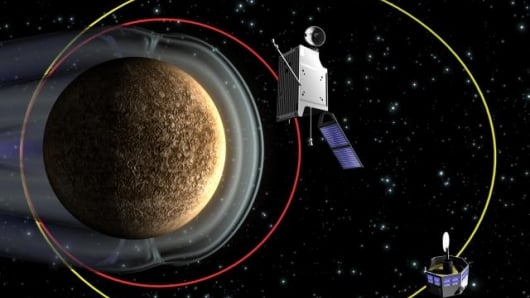 Japan and Europe are collaborating to develop the BepiColombo mission (pictured, right) to explore Mercury. The mission will consist of two orbiting spacecraft, one built by JAXA and one by ESA, that are slated to be launched together on a single European Ariane 5 rocket in 2015. JAXA’s orbiter will focus on studying the magnetic fields and space environment around Mercury. This area of study is of particular interest because Earth and Mercury are the only planets in the inner Solar System to have magnetic fields, and studying Mercury’s magnetic field could provide insights that help us better understand the one on Earth. ESA’s orbiter will focus on understanding the interior and surface of Mercury and how its position so close to the Sun affects its structure. It will also attempt to verify the existence of water ice in Mercury’s polar region.
Japan and Europe are collaborating to develop the BepiColombo mission (pictured, right) to explore Mercury. The mission will consist of two orbiting spacecraft, one built by JAXA and one by ESA, that are slated to be launched together on a single European Ariane 5 rocket in 2015. JAXA’s orbiter will focus on studying the magnetic fields and space environment around Mercury. This area of study is of particular interest because Earth and Mercury are the only planets in the inner Solar System to have magnetic fields, and studying Mercury’s magnetic field could provide insights that help us better understand the one on Earth. ESA’s orbiter will focus on understanding the interior and surface of Mercury and how its position so close to the Sun affects its structure. It will also attempt to verify the existence of water ice in Mercury’s polar region.
Read more in The Space Report: The Authoritative Guide to Global Space Activity.
Learn More: Buy The Space Report Now
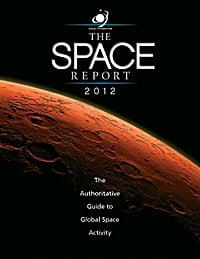 Valuable to space professionals, students, policymakers, researchers and the media, The Space Report includes highlights from all space sectors – from defense to exploration – and illustrates how space activity affects people around the world. The book, which is available in hard copy, PDF and CD versions, provides a wealth of information on global space budgets, revenues and industry performance tracked by the Space Foundation Indexes. Content includes:
Valuable to space professionals, students, policymakers, researchers and the media, The Space Report includes highlights from all space sectors – from defense to exploration – and illustrates how space activity affects people around the world. The book, which is available in hard copy, PDF and CD versions, provides a wealth of information on global space budgets, revenues and industry performance tracked by the Space Foundation Indexes. Content includes:
- Discussion of the impact of budget austerity on the global space economy and space programs around the world
- Information on global launch capabilities, successes and failures in 2011
- Demographic information for the European Space Agency (ESA) and the Japan Aerospace Exploration Agency (JAXA)
- Outlook for human spaceflight and global positioning systems in major spacefaring countries
- New figures for jobs created and revenue generated by commercialization of NASA spinoffs
- First-time data on South Korea’s space workforce
To order the publication, click here. To view a short video about the benefits of The Space Report, click here.
 Past issues are also available at discounted rates. And, to make a difference in science, technology, engineering and mathematic education, consider donating The Space Report to your favorite libraries or schools.
Past issues are also available at discounted rates. And, to make a difference in science, technology, engineering and mathematic education, consider donating The Space Report to your favorite libraries or schools.
This article is part of Space Watch: October 2012 (Volume: 11, Issue: 10).

